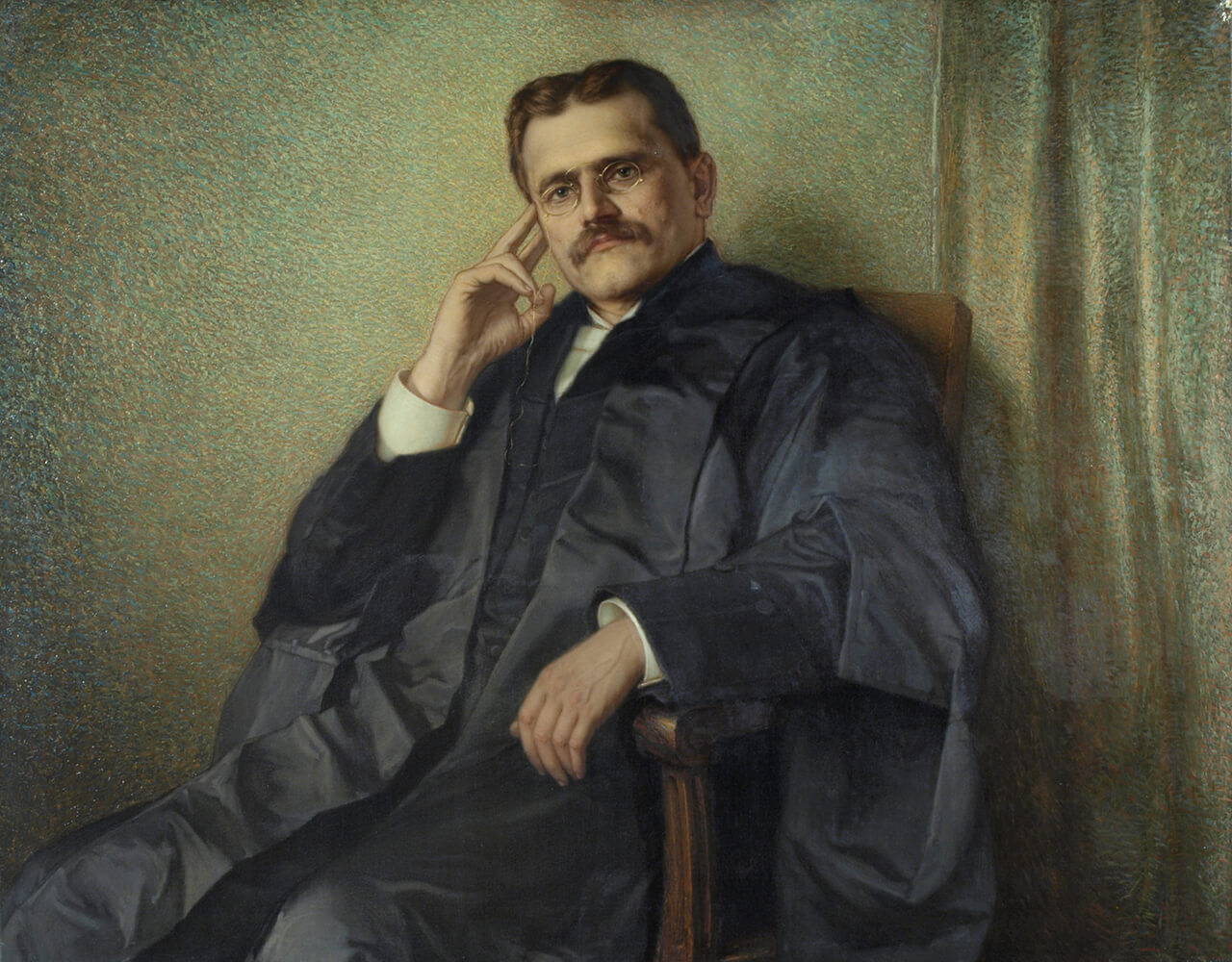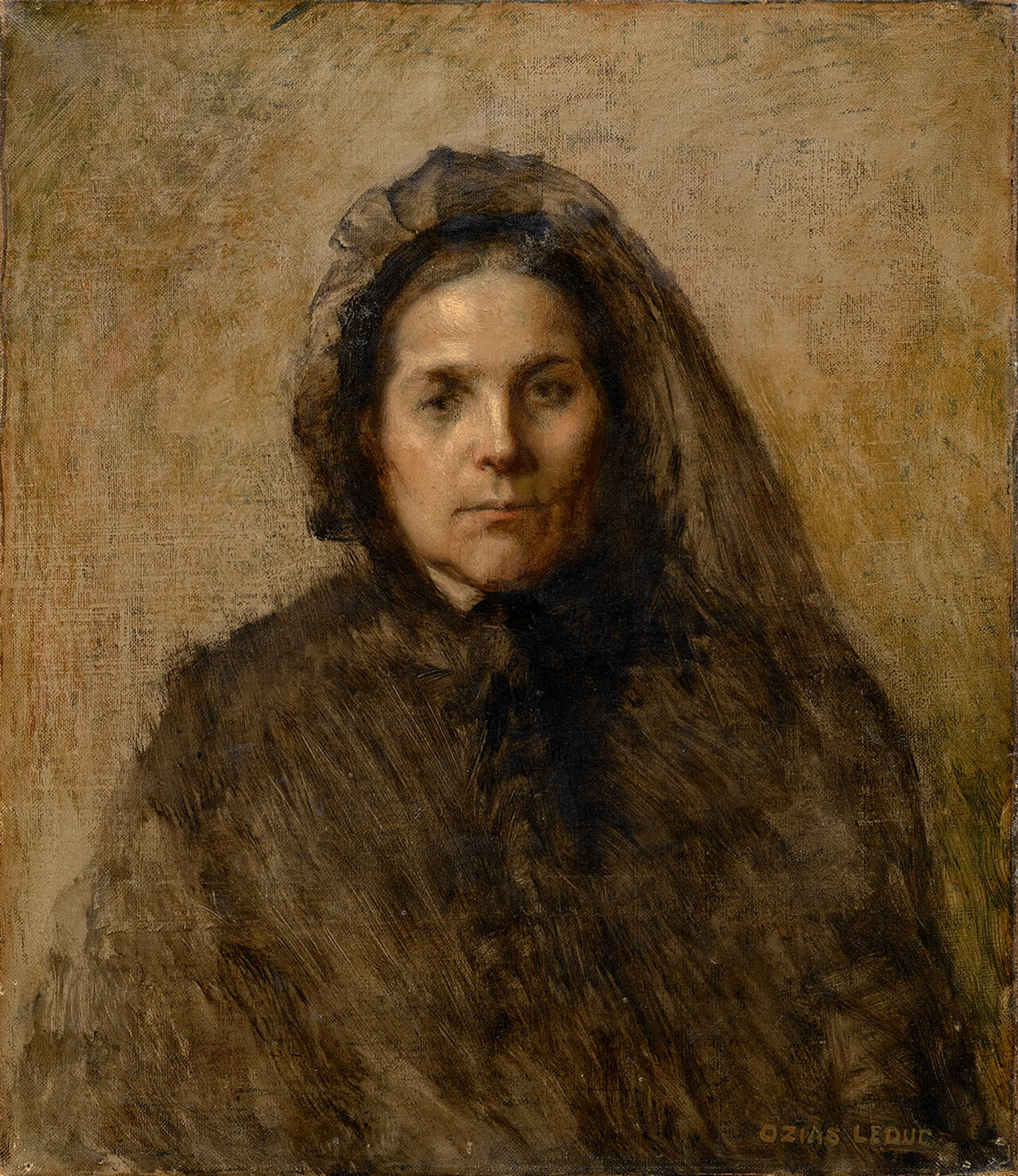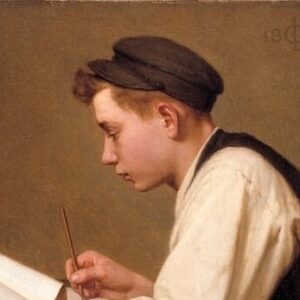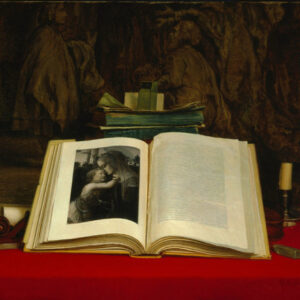Portrait of the Honourable Louis-Philippe Brodeur 1901-4

Ozias Leduc, Portrait of the Honourable Louis-Philippe Brodeur (Portrait de l’honorable Louis-Philippe Brodeur), 1901–4
Oil on canvas, 99.4 x 125.7 cm
Collection of the House of Commons, Ottawa
For his portrait of the lawyer Louis-Philippe Brodeur, Leduc first made photos and drawings of his sitter in his Saint-Hilaire studio, and based on those preliminary sketches he decided on this seated pose in an interior without decor of any kind. Only the barrister’s robe indicates the sitter’s high position; his posture is relaxed as he sits in an armchair with no pomp or formality. Leaning back, he supports his head lightly with two fingers and looks to the left. The focus of the portrait is the attentive, searching gaze he directs through his pince-nez, as if patiently observing the painting taking shape before his eyes.
Brodeur was Speaker of the House of Commons from 1901 to 1904. He resided at Beloeil and was Leduc’s contemporary; they knew each other well. Brodeur was a descendant of the Patriotes who had taken part in the Rebellion of 1837–38. He was a colleague and close friend of Philippe-Auguste Choquette, with whom he founded the Liberal newspaper Le Soir. Elected federal MP for Rouville in 1891, he was rewarded for his loyalty to Premier Wilfrid Laurier with a quick rise through the government echelons. He served in turn as minister of inland revenue and then as minister of marine and fisheries, where he oversaw important international commercial agreements and also the creation of a Canadian navy. He ended his career as a justice of the Supreme Court of Canada.
It was on the occasion of his nomination as Speaker that he asked Leduc to paint his portrait, a work that would not be finished until 1904. During these years Leduc was involved in several large church decoration projects, which delayed the completion of the portrait. This delay was characteristic of his way of working. He would often change the promised delivery date of a work in order to have more time to let the project mature, and to complete it to his own satisfaction.


Leduc’s first portraits had concentrated on faces, as in his self-portrait of 1899, but after 1900 he often portrayed his sitters at half-length and in rather stiff, formal poses, such as in the painting of his poet friend Guy Delahaye (1888–1969), from 1912. By picturing his models in a more relaxed or genial mood, as with Brodeur, Leduc aimed to convey the essence of that person. There is no sense of spontaneity in the painting, as if the figure were in motion. On the contrary, the type of mechanical gesture that characterizes Brodeur here is often what gives Leduc’s sitters a more permanent and monumental appearance.
The dark, sober colour of Brodeur’s clothing is created through the opposition of shiny and matte black areas, which accentuate the realistically rendered head and hands. The anatomical modelling is produced by chiaroscuro effects and by details (moles, a moustache, the position of a hand) that emphasize the fidelity of the representation. This realistic effect is undercut by the background, which haloes the figure in light. A play of rapid touches in gold and purple reminds us that we are looking at a painted surface. The drape of a curtain drawn to the right supports the artificial effect, suggesting a theatrical presentation, with Brodeur becoming both spectator and actor in this staging, a presentation that breaks with the tradition seen in the official portraits of his predecessors in the office of Speaker.

 About the Author
About the Author
 More Online Art Books
More Online Art Books
 Acknowledgements
Acknowledgements